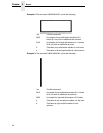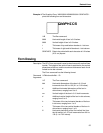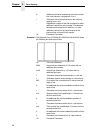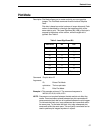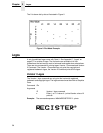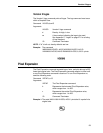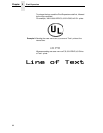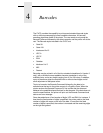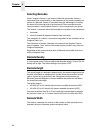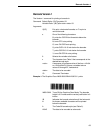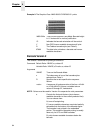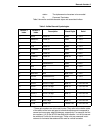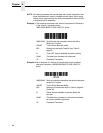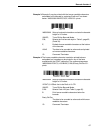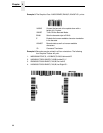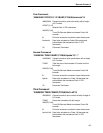
62
Chapter 4
Selecting Barcodes
Code V supports Version 1 and Version 2 Barcode commands. Version 1
commands allow more flexibility in the placement of the human-readable text
portion of a barcode. Version 2 commands have the advantage of including
the name of the barcode style in the command. Either command must be
contained within a valid Graphics Pass for it to be recognized by the printer.
The Version 1 command allows the barcodes to be printed in two orientations:
1. Horizontal
2. Vertical (rotated 90 degrees clockwise from horizontal).
The orientation of a Version 1 barcode is independent of the orientation of the
Graphics Pass it is in.
The orientation of Version 2 barcode is the same as the Graphics Pass in
which it appears. Thus, Version 2 barcodes may be printed in any of the four
Graphics orientations.
Regardless of the command style used, all Barcode commands must occur
within a Graphics Pass.
Barcode Density
A control panel option (Darkbar) defines the Barcode density. If set to ON, the
density will be high. The default setting of this option is OFF.
Barcode Height
The overall height of a barcode is determined by the window height (when the
barcode is horizontal or upside down) or width (when the barcode is vertical
right or vertical left) as specified in the ^M sequence that precedes the
Barcode Command Sequence. Human-readable characters are included in
the overall barcode height.
The height range is:
• 02 to 99 (0.2 to 9.9 inches) without human-readable characters (HRC).
• 03 to 99 (0.3 to 9.9 inches) with human-readable characters (HRC).
Character sizes less than 02 or 03 will cause the barcode height to assume
the minimum value (i.e., 0.2 inches without HRC and 0.3 inches with HRC).
Barcode Width
The width of a barcode is a function of the number of data characters to be
encoded, the style of barcode, and the bar/space ratios.



